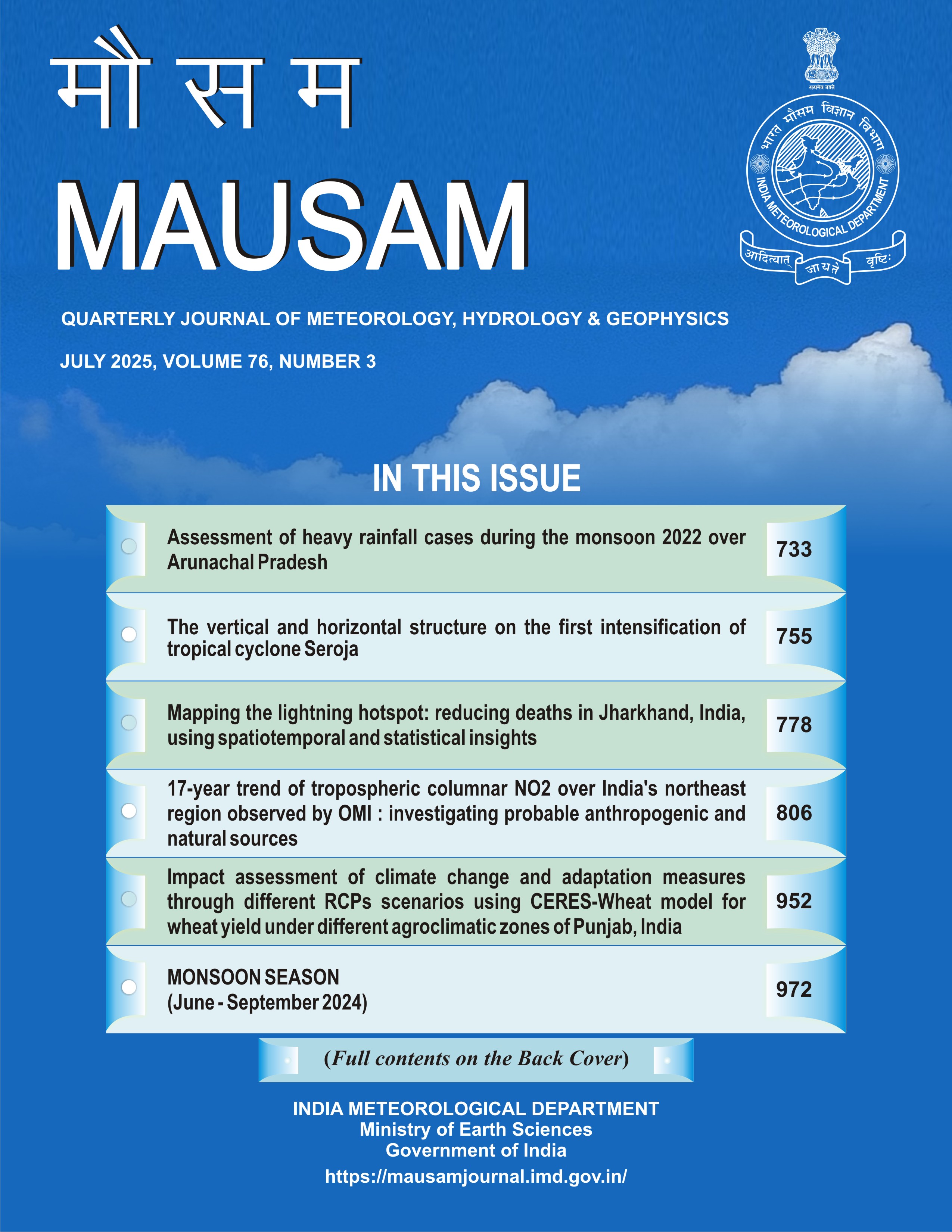Temporal variation in precipitation and temperature in Arunachal Pradesh, India
DOI:
https://doi.org/10.54302/mausam.v76i3.6090Abstract
This study examines the temporal variations in rainfall and temperature over the Lepa Rada district of Arunachal Pradesh from 1983 to 2021. Using both parametric (Linear Regression) and non-parametric (Mann-Kendall and Sen's slope) methods, significant climatic trends were identified. The analysis revealed a statistically significant declining trend in winter rainfall, with linear regression indicating a decrease of 2.809 mm/year, corroborated by significant Mann-Kendall’s Z statistic and Sen’s slope estimates. Temperature trends showed a significant increase in maximum temperatures across all seasons(spring@ 0.109 °C/year; summer @0.103 °C/year; autumn @0.113 °C/year and winter @0.139 °C/year), with annual rates of increase observed at 0.115°C/year (p<0.01) through linear regression. Similarly, the Mann-Kendall test confirmed these findings, with significant Z values across all seasons. In contrast, minimum temperatures showed a significant declining trend during spring and winter, suggesting increased coldness over time. These trends hold significant implications for agriculture and environmental planning in the region. The decline in winter rainfall and the rise in maximum temperatures could adversely affect crop yields and water resources, emphasizing the need for adaptive agricultural practices and efficient water management strategies. Additionally, the increase in coldness during winter and spring suggests the importance of developing climate-resilient crops and improving forecasting systems to help farmers better prepare for changing weather conditions.
Downloads
Published
How to Cite
Issue
Section
License
Copyright (c) 2025 MAUSAM

This work is licensed under a Creative Commons Attribution-NonCommercial 4.0 International License.
All articles published by MAUSAM are licensed under the Creative Commons Attribution 4.0 International License. This permits anyone.
Anyone is free:
- To Share - to copy, distribute and transmit the work
- To Remix - to adapt the work.
Under the following conditions:
- Share - copy and redistribute the material in any medium or format
- Adapt - remix, transform, and build upon the material for any purpose, even
commercially.



